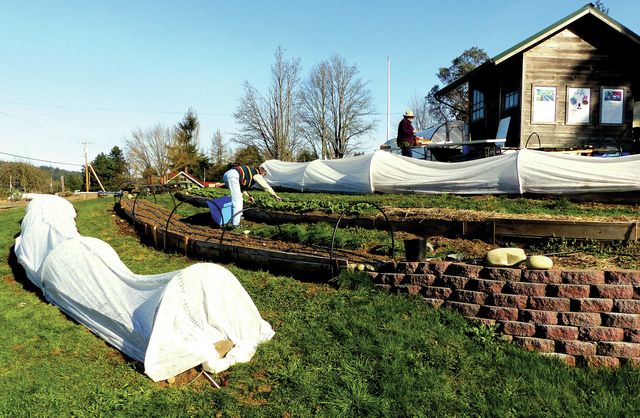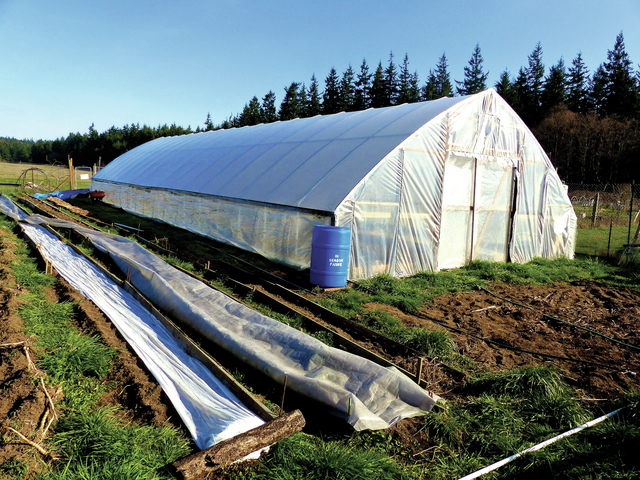Greenhouses aren’t the only great cover-ups for gardeners determined to extend their growing seasons. ADVERTISING Greenhouses aren’t the only great cover-ups for gardeners determined to extend their growing seasons. High tunnels, low tunnels and caterpillar tunnels work well, too. Also
Greenhouses aren’t the only great cover-ups for gardeners determined to extend their growing seasons.
High tunnels, low tunnels and caterpillar tunnels work well, too. Also known as hoop houses or row covers, the tunnels consist of U-shaped metal or PVC (polyvinyl chloride) ribs draped by thin, plastic sheets.
They provide shade for sun-sensitive crops, protect tender plants from frost, help control insects and boost yields.
Why build hoop houses rather than more traditional greenhouses? Primarily because they don’t need artificial heat when seasonal temperatures drop.
“Greenhouses are cost-prohibitive,” said Dan Phelps, program coordinator and specialty crop specialist with the Kansas Rural Center, in Whiting. “You have to heat these structures all winter long and that usually means fuel costs. With hoop houses, passive solar heating is enough to grow crops on both sides of the calendar.”
You can walk under high tunnels and many of the caterpillar tunnels, which resemble poly-covered Quonset huts linked end-to-end, or caterpillars.
“That’s a big plus, especially in rainy locations,” Phelps said. “You’re able to plant, harvest and cultivate even if conditions are wet outdoors.”
Soggy soils can delay planting by several weeks in early spring, and frozen ground also will prevent planting. “But that’s not a problem (when growing) under high tunnels,” Phelps said.
Along with extending the growing seasons, high tunnels can double the size of your harvest, he said.
“Tomatoes, for example, are notorious for (moisture-caused) blemishes. In outdoor conditions, you’re probably throwing away 30 percent of the crop because of blemishes. You can reduce that to 5 to 10 percent using tunnels,” he said.
High tunnels are a relatively new development for home gardeners in North America, but it’s expected they’ll soon become popular, said Cary Rivard, director of Kansas State University’s Olathe Horticulture Research and Extension Center.
“One of the things that has really helped open up this option is that the industry is starting to make small kits that can withstand high wind conditions, and there are some homemade options available,” Rivard said.
“They also would make great cold frames or greenhouses for growing transplants in the spring,” he said.
Keep in mind that the smaller the tunnel, the less thermal mass it contains, Rivard said. That means it will heat up and cool down more rapidly.
“So if they are building very small tunnels, they are going to need to be able to ventilate them really well in the summer using tall sidewalls and well-ventilated end walls,” he said. “Similarly, during the wintertime, a small tunnel will cool off very quickly.”
Hoop houses vary in type and size, but sidewalls often are 4 to 6 feet high topped by rounded rooflines. The hoops are spaced more closely together for strength in areas that get heavy snow.
Caterpillar houses are narrower and barely tall enough for gardeners to stand erect. Low tunnels are even smaller — generally around 2 feet high. These are recommended for cold-season crops like greens and certain herbs.
For more about poly tunnels, visit the Cornell University Dept. of Horticulture home page at hort.cornell.edu/hightunnel/structures/index.htm.
Contact Dean Fosdick at deanfosdicknetscape.net




